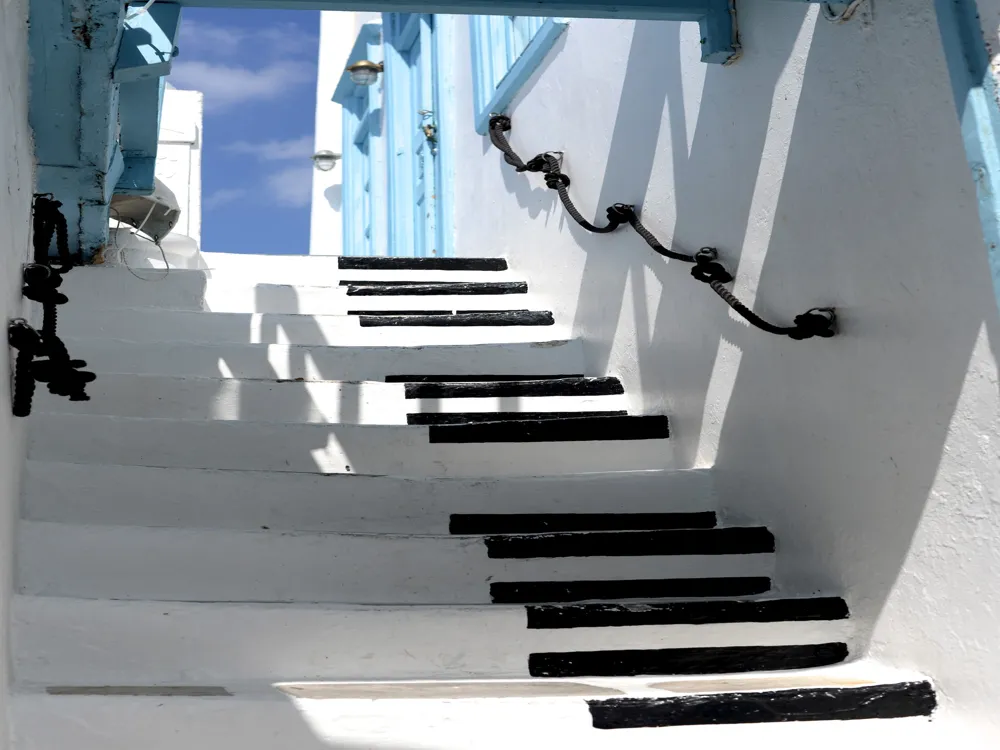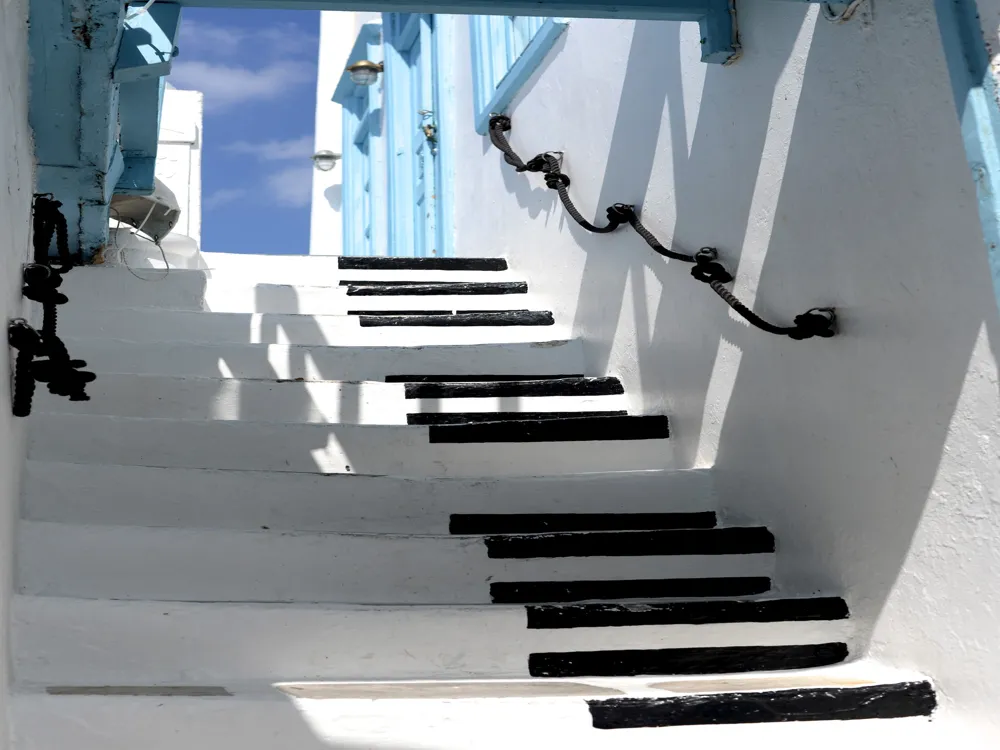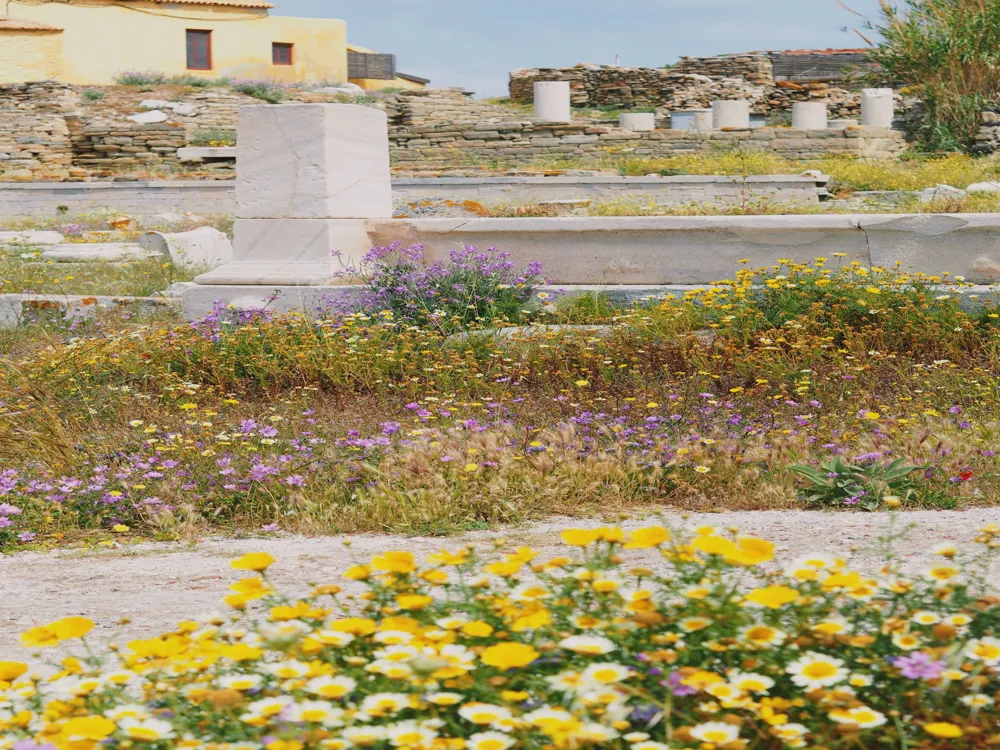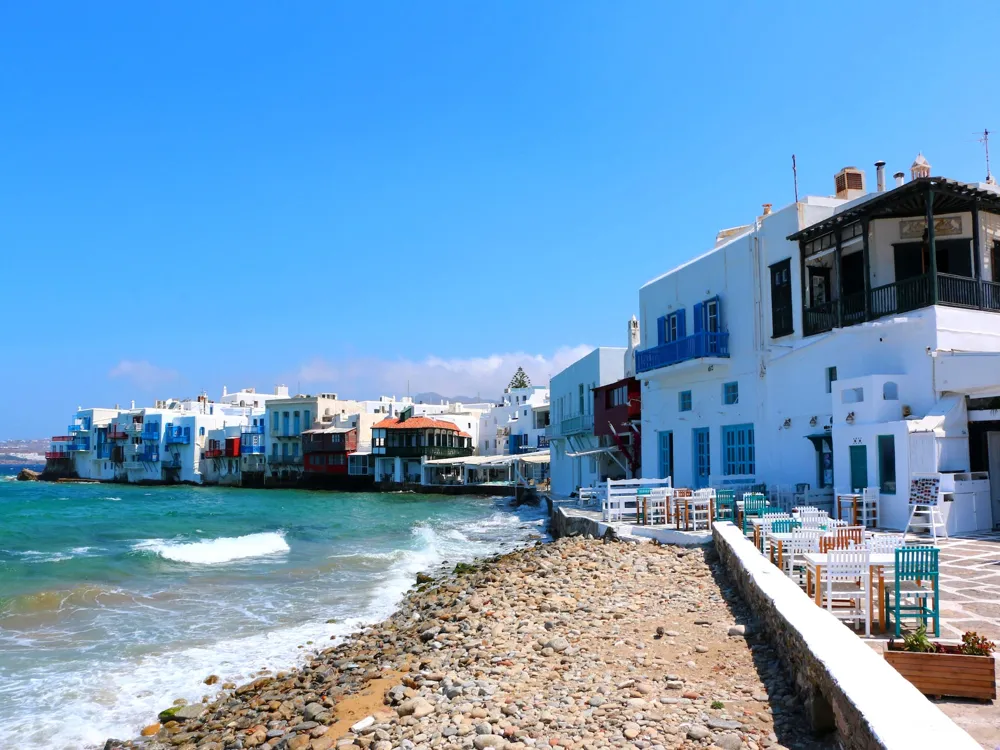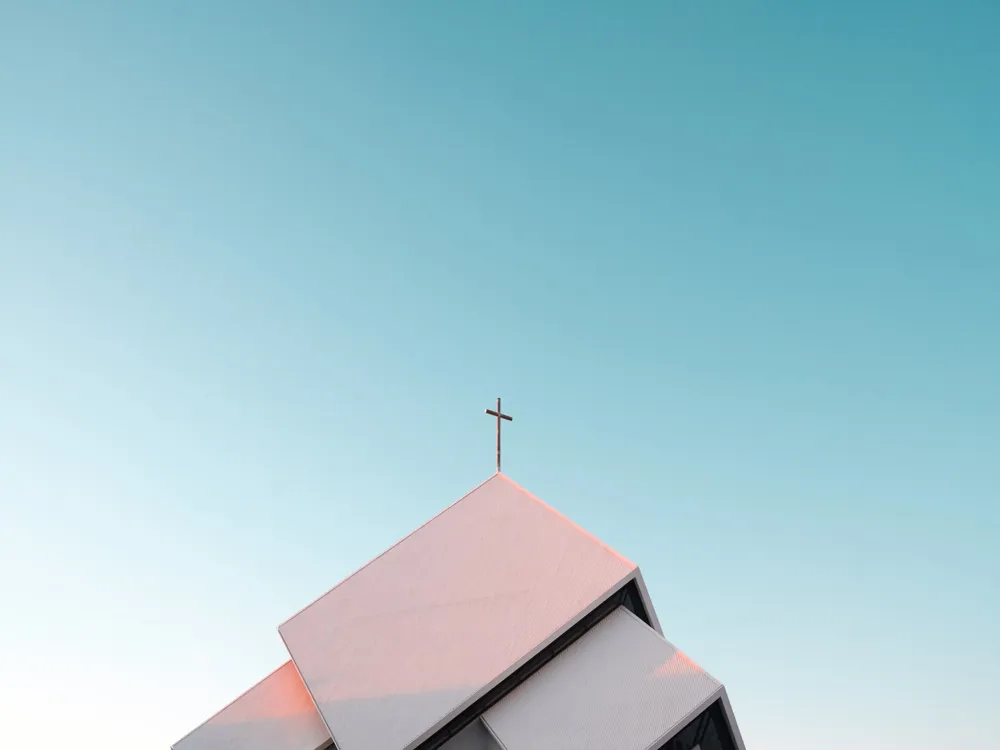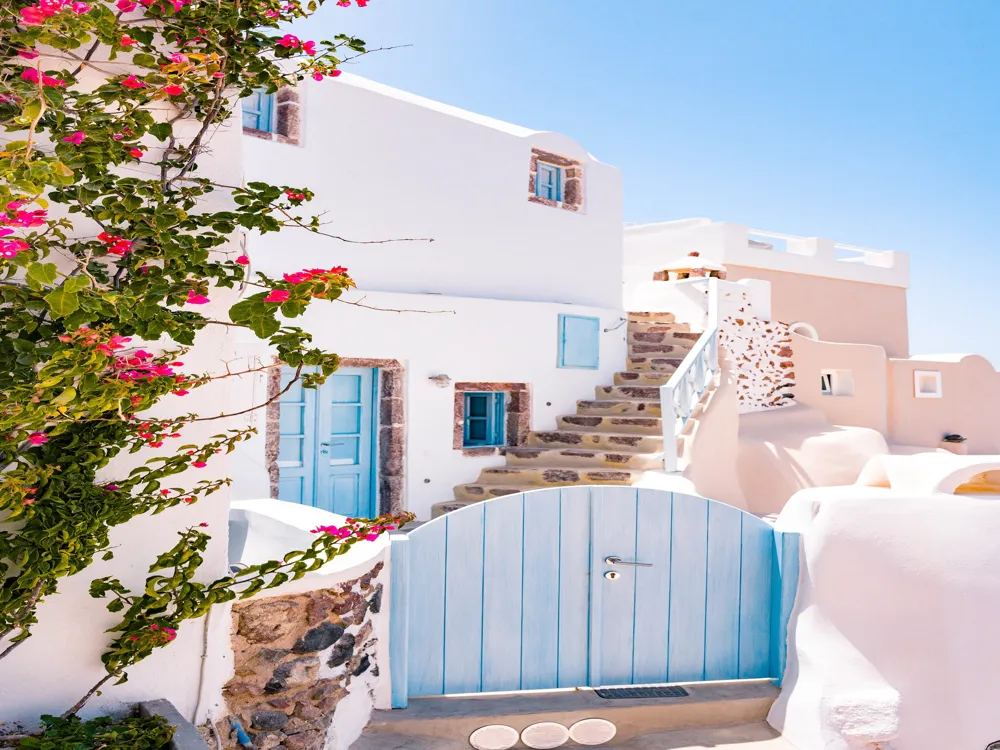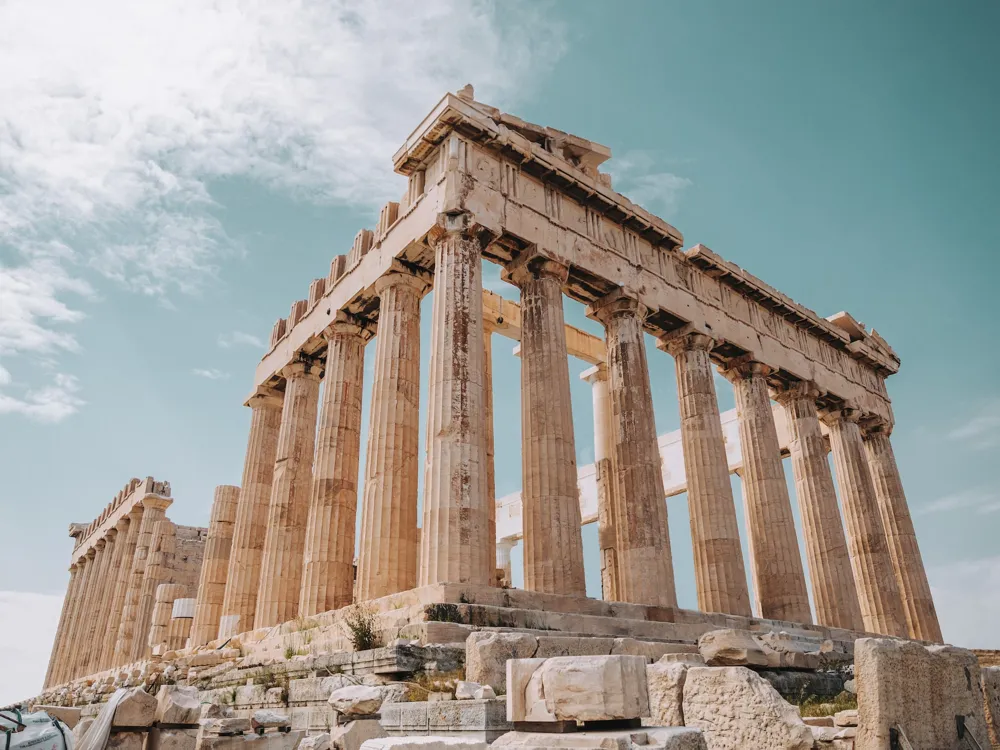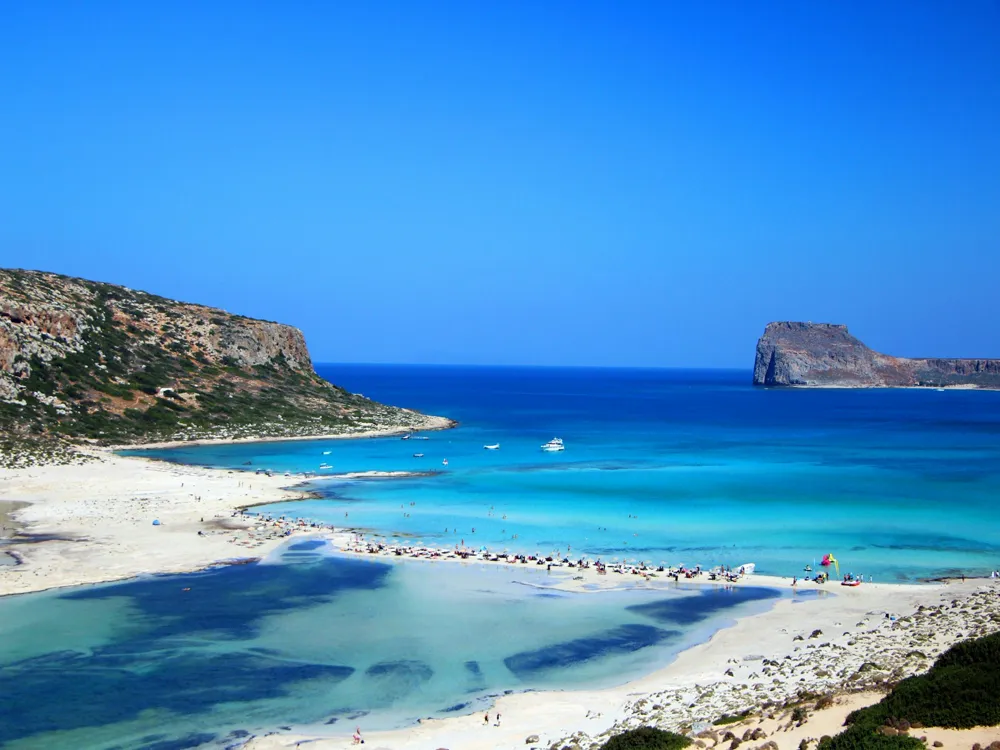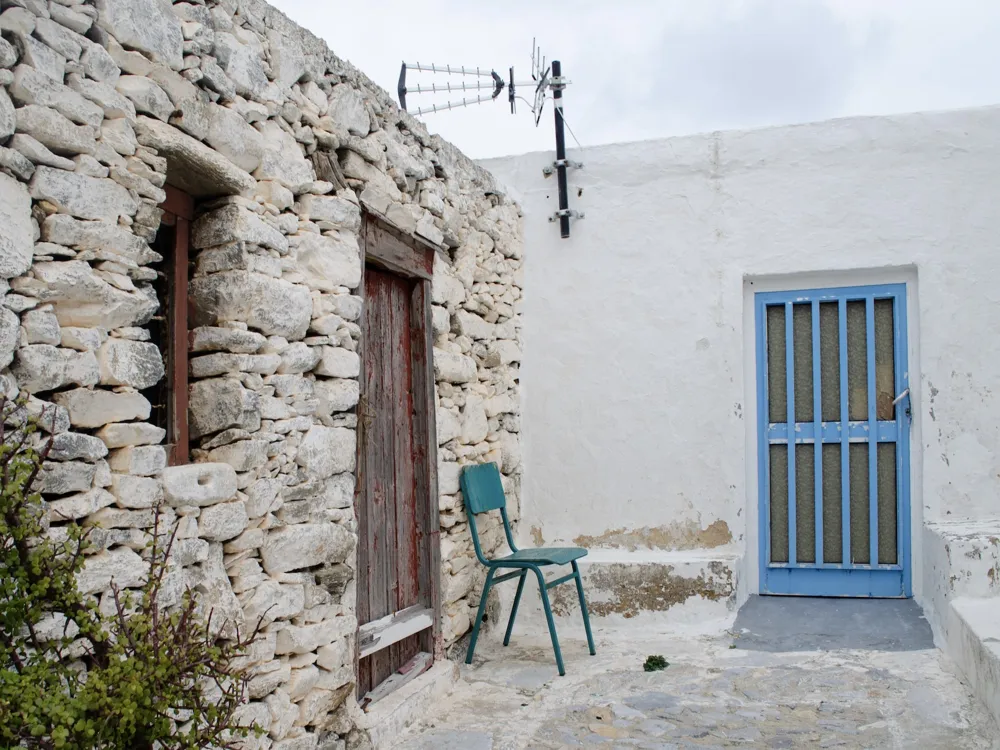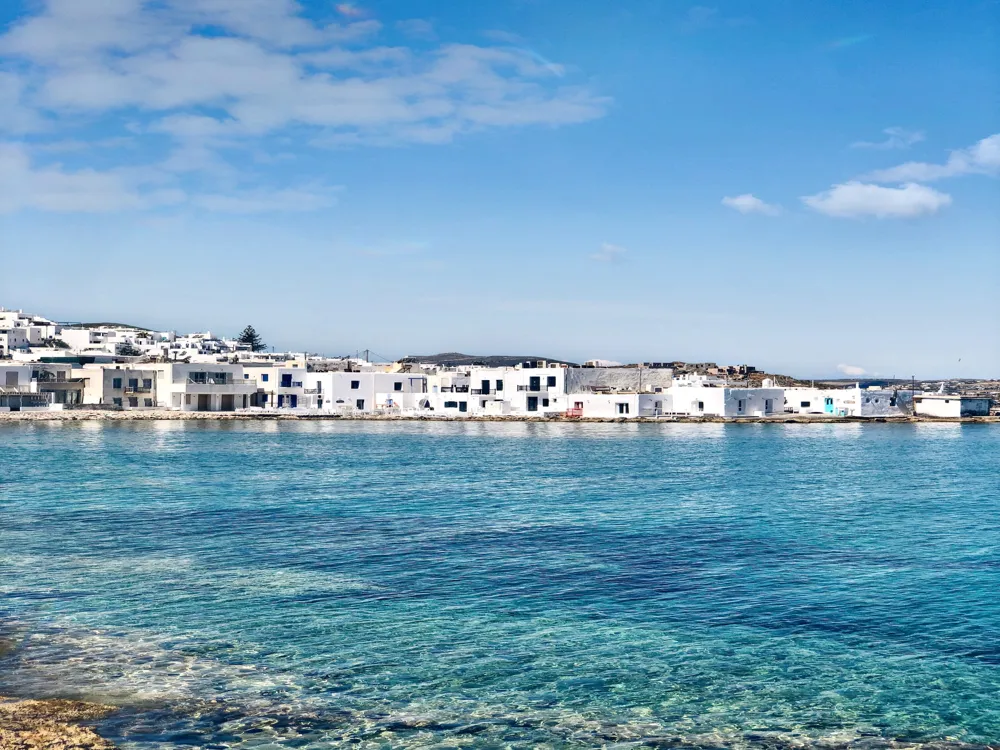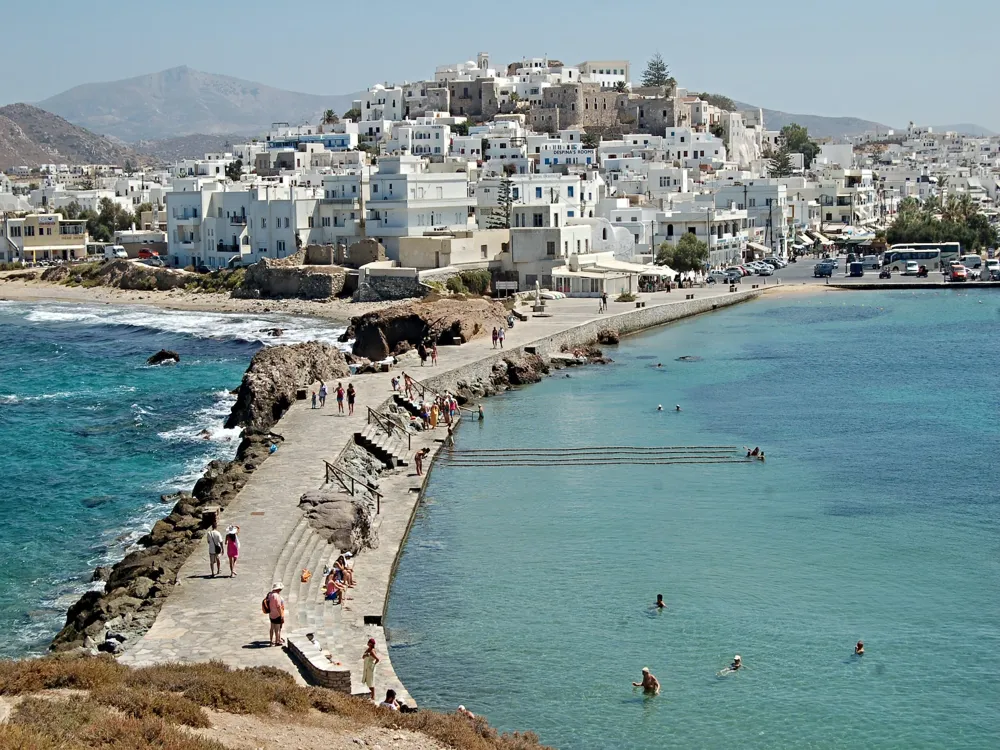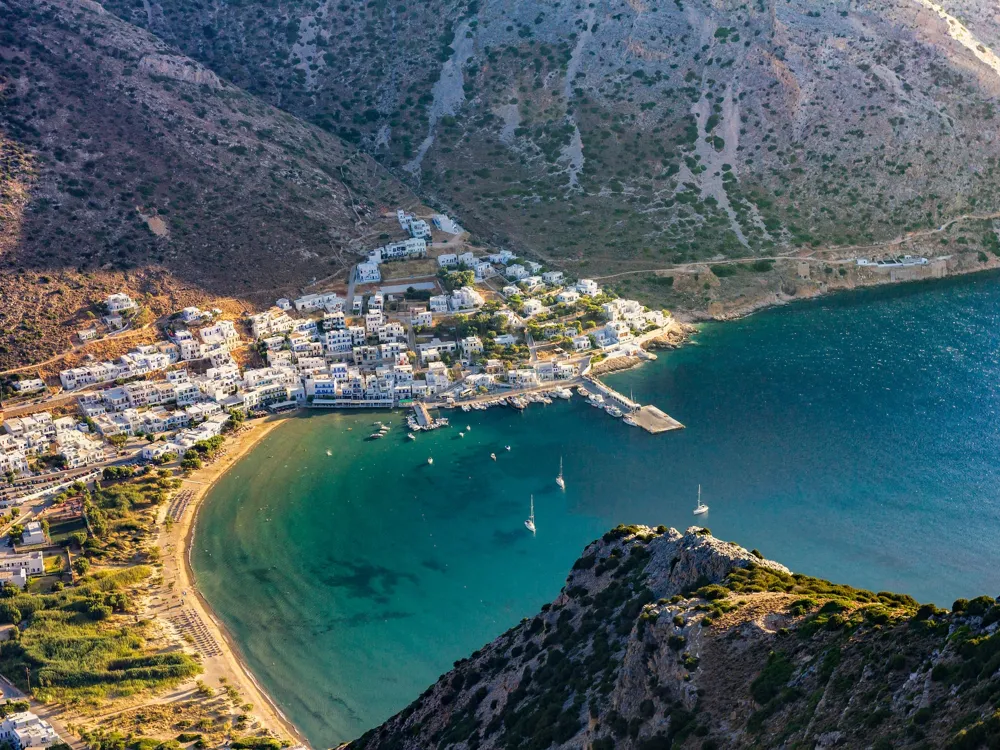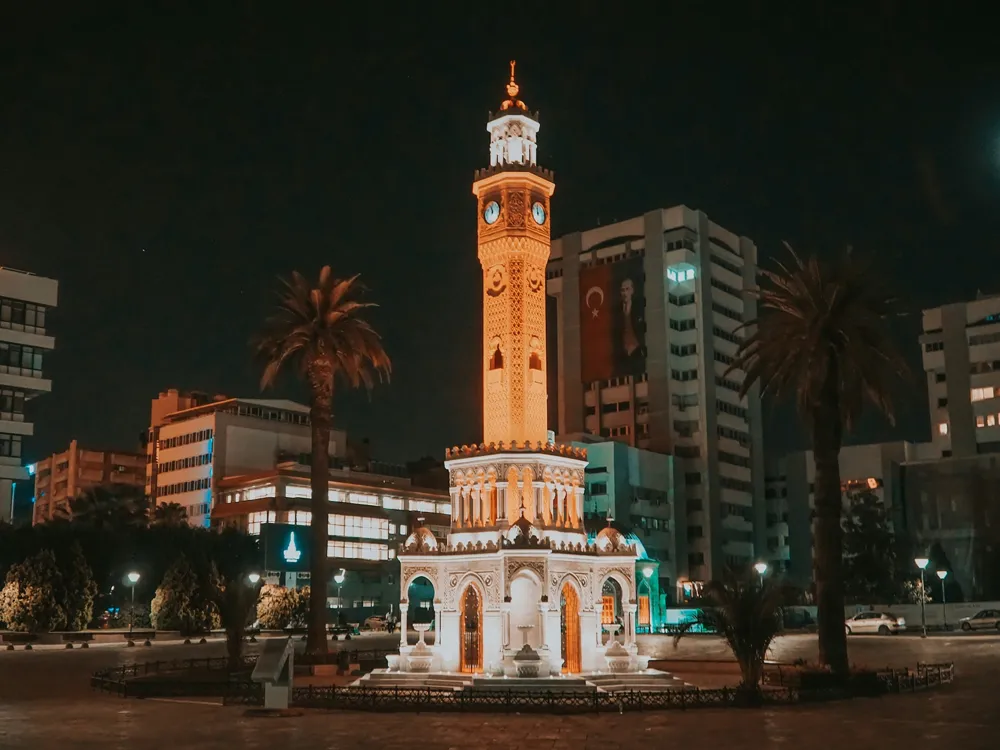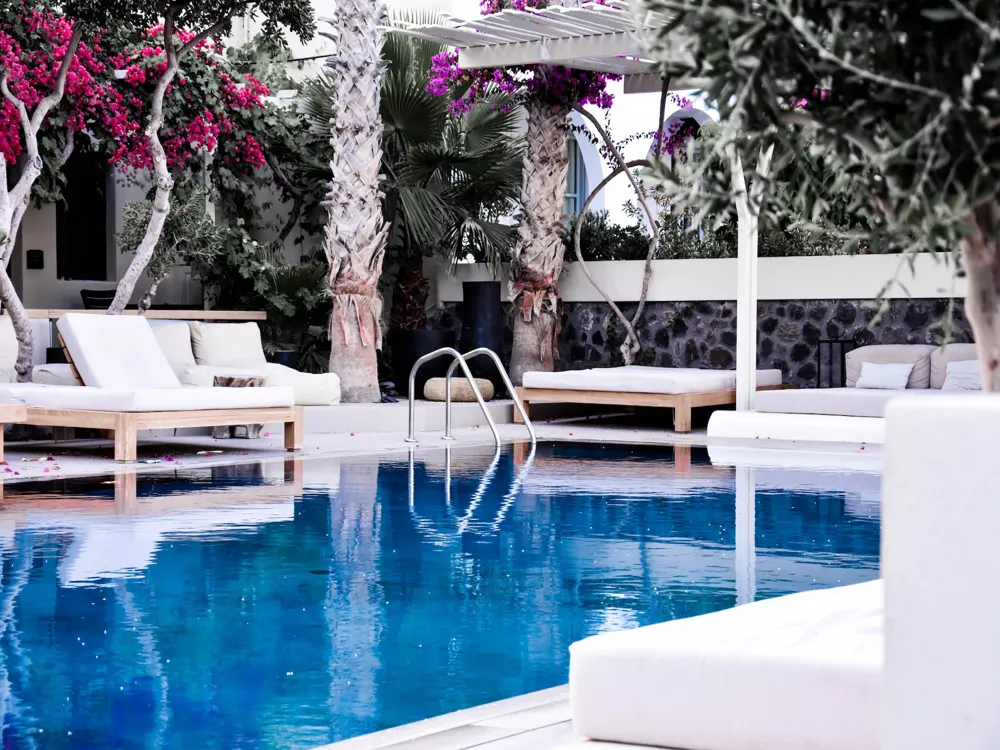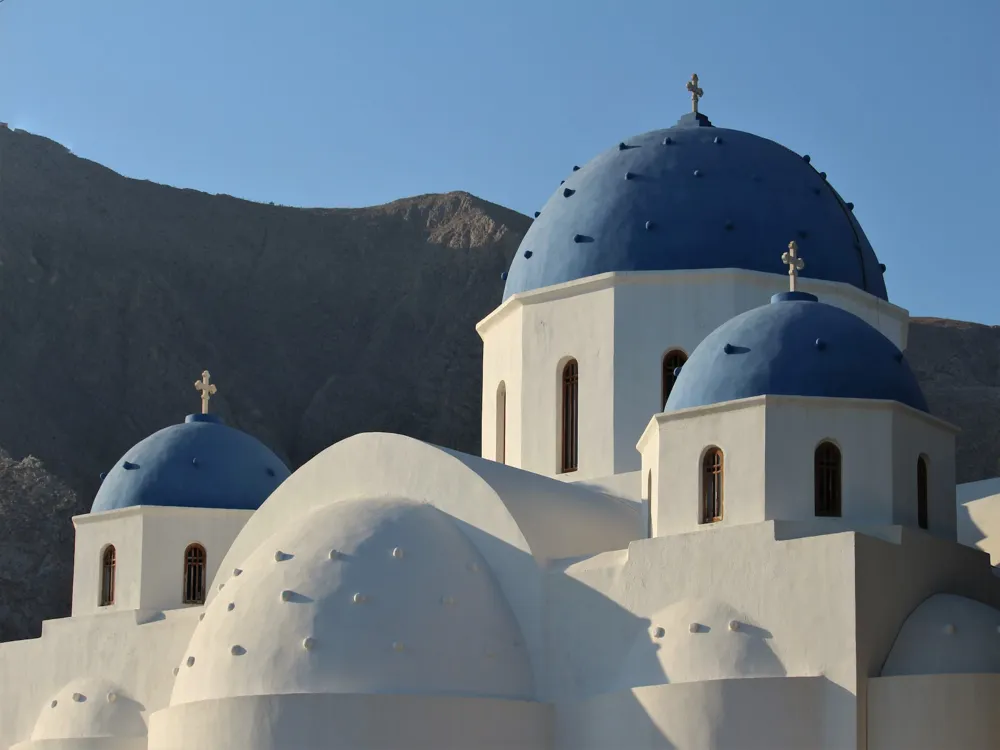Delos, a small island in the Aegean Sea near Mykonos, Greece, is a place of profound historical and mythological significance. According to Greek mythology, it is the birthplace of the twin gods Apollo and Artemis. The island's importance in ancient times, as both a religious sanctuary and a bustling commercial center, has left a remarkable archaeological legacy, making it a UNESCO World Heritage site since 1990. Delos' history dates back to the 3rd millennium BC, and its influence peaked around the 7th to the 1st century BC. It was considered a holy sanctuary and was the center of the Delian League during the classical period of Greece. The island's location at the heart of the Cyclades made it a pivotal maritime and trade hub. The archaeological site on Delos is exceptionally extensive and rich. It includes well-preserved ruins of temples, sanctuaries, an ancient theater, and beautiful mosaics, offering a unique and vivid picture of life in an ancient Greek city. Despite its small size, Delos played a significant role in the development of the Mediterranean civilization. Its influence in religion, politics, and commerce set foundations that have shaped the historical trajectory of the region. Today, Delos is not just an archaeological site but also a symbol of the cultural and historical continuity of the area. In Greek mythology, Delos holds a place of high esteem as it is considered the birthplace of Apollo, the god of light, and his twin sister Artemis, the goddess of hunting. The myth states that Leto, their mother, sought refuge in Delos to give birth to them, escaping the wrath of Hera, the wife of Zeus. This mythological significance made Delos a sacred island, leading to its development as a major religious center during ancient times. The entire island was dedicated to Apollo, and it hosted major religious festivals and games in his honor. Delos' history is marked by several significant developments. It was initially inhabited in the 3rd millennium BC. The island’s development as a religious center began in the 8th century BC when the Ionians settled there and dedicated the island to Apollo. Delos’ importance grew during the classical period of ancient Greece, especially in the 5th century BC, when the Delian League, a confederation of Greek city-states, was headquartered there. This period saw the island flourish both religiously and commercially. However, the decline began after the Romans sacked it in 88 BC, and the once-thriving island eventually became deserted. The archaeological remains of Delos are some of the most significant in the Greek world. They provide a comprehensive picture of the urban and religious life in the ancient Greek world. Key sites include the Terrace of the Lions, the House of Dionysus, and the Temple of Isis, each reflecting a blend of different cultural influences. The entire island is an open-air museum, showcasing an extensive range of public buildings, private houses, and religious monuments. The architecture of Delos offers a fascinating insight into ancient Greek urban planning and design. The layout of the island was well planned, with a grid system of streets, public squares, and buildings that catered to various aspects of daily life and religious practices. Delos’ architecture is characterized by its diversity, reflecting the various cultures and influences that came through its ports as a major trading center. The religious architecture of Delos is centered around the Sanctuary of Apollo, which houses several temples dedicated to the god. These temples are prime examples of classical Greek temple design, featuring Doric columns and intricate marble sculptures. The sanctuary also includes the Terrace of the Lions, where marble lions stand guard, serving as an offering to Apollo. The residential architecture on Delos is equally impressive. The houses were built with luxurious elements, such as mosaic floors, terraces, and richly decorated interiors, reflecting the wealth and status of their owners. The House of Dionysus, known for its stunning mosaic of Dionysus riding a tiger, is a prime example of opulent domestic architecture. Commercial and public buildings, like the Agora (marketplace) and the theater, were central to the social and economic life of the island. The theater, which could seat around 5,500 spectators, was a hub for cultural events. The commercial buildings reflect the island's role as a trading center, with storerooms, shops, and workshops. Delos’ urban design showcases advanced planning. The streets were laid out in a grid pattern, a hallmark of Hippodamian urban planning. This layout facilitated efficient movement and organized distribution of residential, commercial, and religious spaces. The infrastructure, including water supply and sewage systems, highlights the engineering skills of the ancient Greeks. The architecture of Delos also reflects the influence of different cultures, such as Egyptian, Syrian, and Roman, a testament to the island's role as a cosmopolitan trading hub. This multicultural influence is evident in the syncretic architectural styles and decorations, including Egyptian deities featured in the Temple of Isis. Preservation and restoration efforts on Delos are ongoing. These efforts are crucial in protecting this invaluable historical and cultural site from the ravages of time and environmental factors. The Greek government and international organizations are involved in preserving Delos' architectural heritage, ensuring that future generations can continue to learn from and appreciate this ancient wonder. The best time to visit Delos is during spring (April to June) or fall (September to October). During these months, the weather is pleasant, and the island is less crowded. It's important to avoid the high tourist season in summer, as the heat can be intense, and the island can get crowded. Delos is a compact island, making it easy to explore on foot. Visitors should wear comfortable walking shoes as the terrain can be uneven. It’s advisable to bring water and sun protection, as there are limited facilities on the island. Opting for a guided tour can enhance the experience, as guides provide valuable insights into the history and significance of the archaeological sites. Several tour options are available from Mykonos and other nearby islands. Visitors should respect the preservation efforts and abide by the rules set by the authorities. This includes not touching the ruins, staying on marked paths, and not removing any artifacts from the site. Photography is allowed on Delos, but the use of drones or professional equipment might require special permission. It's always best to check the latest guidelines and restrictions beforehand. Reaching Delos is primarily done by boat, as the island is uninhabited and does not have an airport. The most common starting point is Mykonos, with regular boat services available, especially during the tourist season. These services usually include round-trip tickets. Other neighboring islands also offer boat trips to Delos but with less frequency. It's advisable to check the boat schedules in advance and be aware of the weather conditions, as they can affect the boat services. Read More:Overview of Delos
Significance in Greek Mythology
Historical Developments
Archaeological Significance
Architecture of Delos
Urban Planning and Design
Influence of Diverse Cultures
Preservation and Restoration Efforts
Tips When Visiting Delos
Best Time to Visit
Getting Around the Island
Guided Tours
Preservation Rules
Photography
How To Reach Delos
Delos
Mykonos
NaN onwards
View mykonos Packages
Weather :
Tags : Island
Timings : 10:00 AM - 5:00 PM
Ticket Price : EUR 20
Planning a Trip? Ask Your Question
Mykonos Travel Packages
View All Packages For Mykonos
Top Hotel Collections for Mykonos

Private Pool

Luxury Hotels

5-Star Hotels

Pet Friendly
Top Hotels Near Mykonos
Other Top Ranking Places In Mykonos
View All Places To Visit In mykonos
View mykonos Packages
Weather :
Tags : Island
Timings : 10:00 AM - 5:00 PM
Ticket Price : EUR 20
Planning a Trip? Ask Your Question
Mykonos Travel Packages
View All Packages For Mykonos
Top Hotel Collections for Mykonos

Private Pool

Luxury Hotels

5-Star Hotels

Pet Friendly







